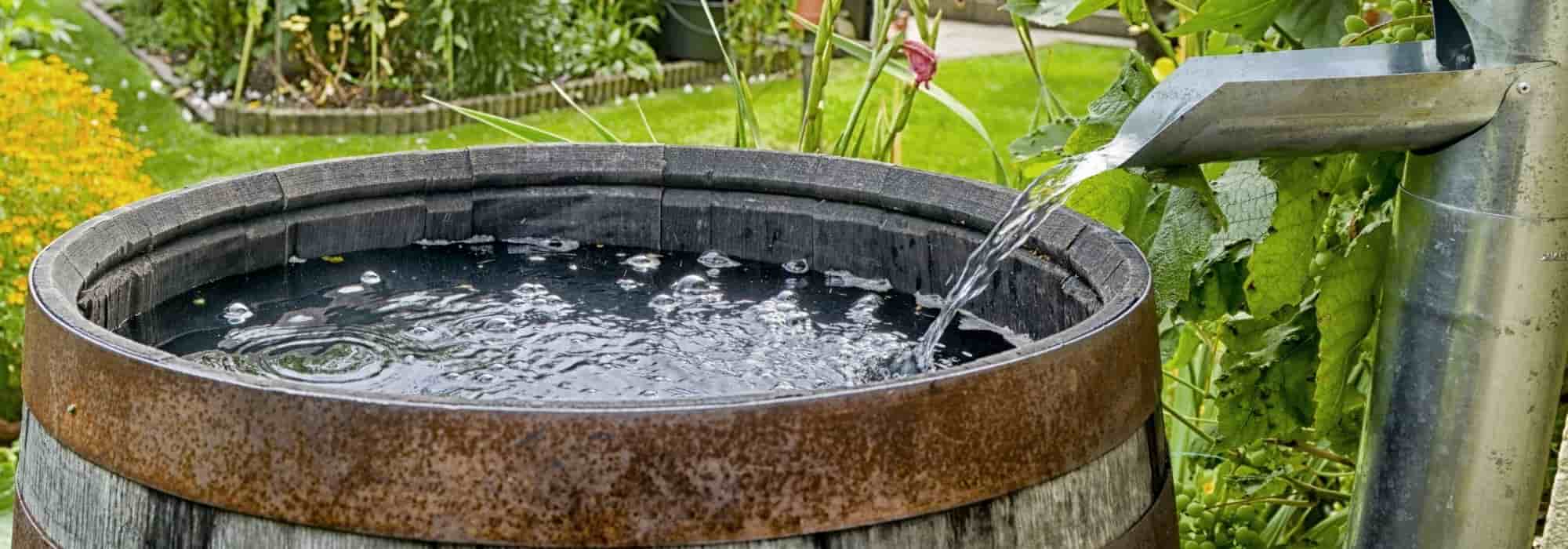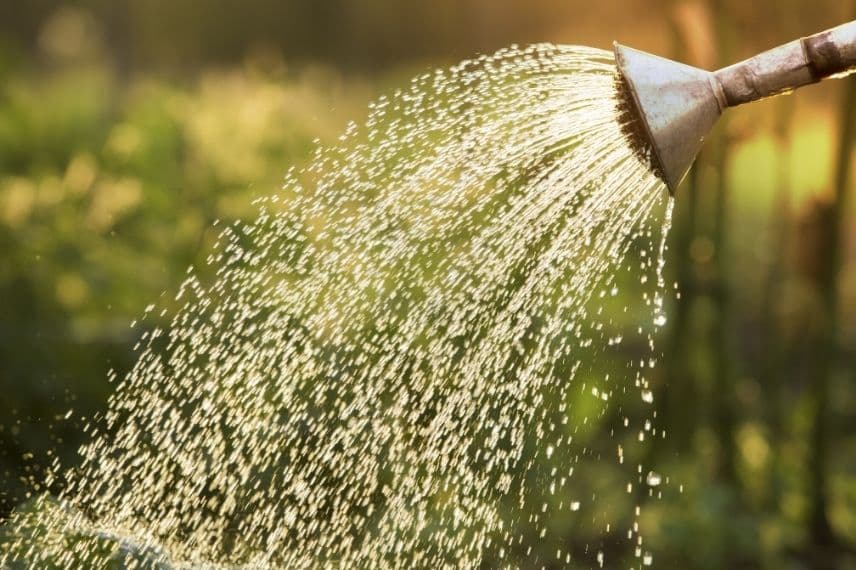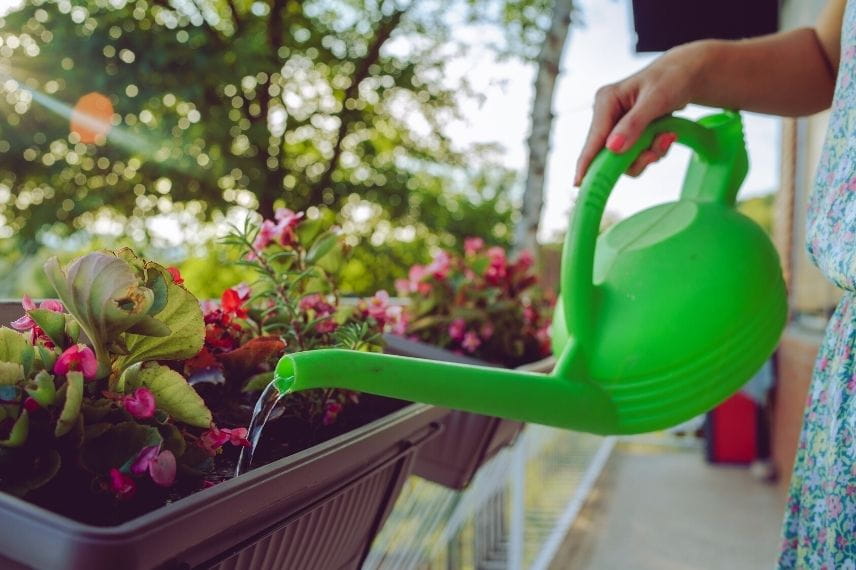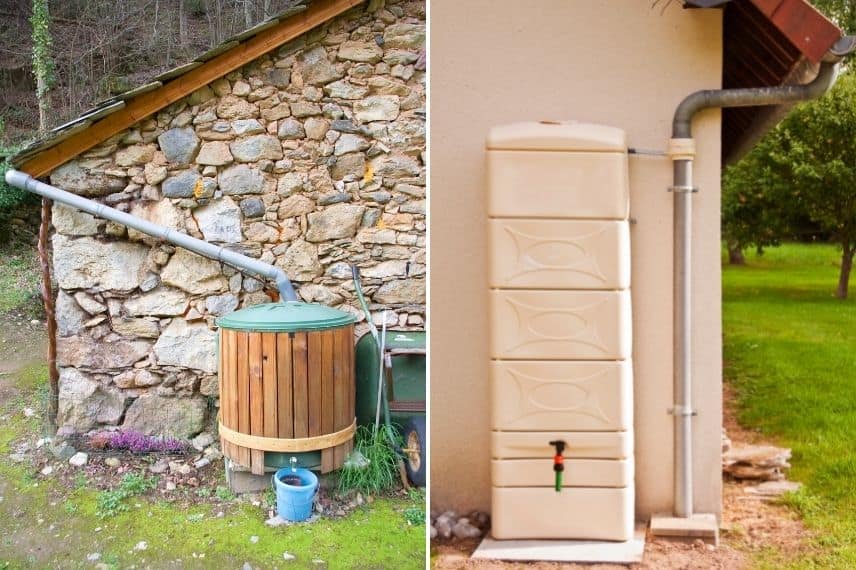
Collecting rainwater
Why and how to collect rainwater in the garden
Contents
You probably know that rainwater is much better than tap water for watering your vegetables, bushes, and garden. Natural and untreated, it contributes to the good health of our plants, whether they are indoors or outdoors. Free, this natural resource, often referred to as “blue gold,” is also economical and ecological. But how can we collect it in the garden or on a balcony? Why is it so important to use it primarily? Follow us, we’ll explain everything about the use and collection of rainwater.

Why collect rainwater?
At present, tap water is becoming increasingly expensive due to the treatments it undergoes and its delivery. Rainwater harvesting allows for significant savings. And let’s be honest, our expenses have been on the rise in recent years!
Moreover, harvesting rainwater is also an ecological gesture. Indeed, by not using tap water, you contribute to the preservation of drinking water reserves intended for our consumption. Not to mention that groundwater levels tend to decrease year by year with climate change.
If you live in an area affected by watering restrictions in summer, harvesting rainwater will allow you to use it without worry.
Rainwater is also the most recommended for watering and for the development of your plants. In fact, it is untreated like tap water and therefore does not contain chlorine. Naturally soft, this rainwater also does not contain lime, which is perfect for our plants, especially acidophilous varieties that fear excess lime. Similarly, it is recommended for watering young plants.
Last advantage: rainwater is generally at room temperature, which avoids thermal shock to the roots of our plants during watering. In contrast, tap water is often very cold. However, if you wish to water your indoor plant in the middle of winter and the water collector is outside, you will need to leave your watering can at room temperature for a few hours before using it.

Rainwater is the most recommended for watering in the garden
What can be done with rainwater?
Rainwater is of course used to water young plants, the vegetable garden, the garden, and indoor as well as outdoor plants. However, it can also be used for all other purposes requiring non-potable water. For example, cleaning the garden path or the house facade, washing the car, cleaning gardening tools, and filling the toilet cistern. It can also be used to fill a pond. If you have an underground tank, coupled with a filter that eliminates bacterium, you can even use it to clean floors and wash your laundry.
Reminder: rainwater is unfit for consumption and should not be consumed.
How to collect rainwater on a balcony?
If you have a balcony, simply install a pot or a balcony box to collect rainwater. Choose a plastic model that will be lighter and easier to handle. The pot should be unperforated, without a drainage hole. If there are young children around, secure the pot out of their reach. Note that it is impossible and not recommended to install a large container or collector on a balcony due to its weight.

How to collect rainwater on a balcony?
Read also
Watering the garden: how to do it?How to collect rainwater in my garden
The simplest way to collect water is to install an outdoor water butt fed by roof runoff.
How to choose a water butt?
You should choose it based on its capacity, your needs, and the size of your garden. Another important criterion: are you in a rainy region where your tank will fill easily or not? Will you only water the garden, or will you also wash the car?
As a general rule, depending on the regions, it is recommended:
- For a garden smaller than 100 m²: a water butt of 100 to 200 litres
- For a garden of 100 to 500 m²: a water butt of 300 to 1000 litres
- For a garden larger than 500 m²: one or more water butts for a total of at least 1000 litres
If possible, choose a tank with a lid to prevent insects and leaves from entering. If you use, for example, an open barrel to collect water, simply place a mosquito net over the top.
Opt for an opaque container to prevent algae formation.
 Water butts
Water butts
Where and how to install my water butt?
- Install your water butt next to a downpipe from your house, garage, or garden shed. Ensure that the roofing material allows for the use of rainwater. Water running off bitumen and asbestos materials should not be used.
- The ground must be flat and stable.
- Prefer a shaded location to limit water evaporation and algae growth.
- If your water butt has a tap, consider raising it slightly to place your watering can underneath.
- Secure your water butt to the wall when possible. This will prevent any risk of it falling during a storm or in the presence of children.
- To limit debris and leaves in the water, you can place a small grid or a leaf guard in your gutter at the downpipe.
- Connect your water butt to your gutter, then install an overflow system to prevent any spillage. These two connection systems are usually provided with the water butt.
I don’t have a gutter or downpipe on my roof, what should I do?
If you don’t have a gutter, as is sometimes the case in certain southern regions, place a wide-opening container in an open area, on the terrace or in the garden. You can use a barrel, a plastic tub, or even a bin. Remember to cover the top with a mosquito net to prevent larvae proliferation. Ensure that your container is not accessible to children.
Tip: some gardeners stretch a tarpaulin between trees and slope it so that rainwater flows into a container. This way, they collect much more water.
 Wide-opening container to collect rainwater
Wide-opening container to collect rainwater
Maintaining a water butt
- It is recommended to empty at least part of your water butt in winter to prevent it from being damaged by severe frost.
- Take advantage of this winter emptying to clean it to maintain water quality. Use a high-pressure jet to remove algae and debris inside. You can repeat this cleaning if your tank is dry in summer.
- Also remember to clear your gutter of leaves and debris that clog it.
Collecting rainwater in an underground tank?
Installing an underground tank allows for the storage of much more water. This is a significant advantage if you wish to use rainwater to fill a pond, do laundry, and supply your toilets. Tanks range from 1,000 litres to 50,000 litres. The smaller ones are generally made of plastic, while the larger ones are typically made of concrete. The choice will depend on your land, the nature of the soil, and your needs.
Do not hesitate to consult professionals in the field who can guide you. The cost of this type of installation is obviously much higher, but some local authorities offer financial assistance. Inquire at your town hall.

Underground tank for collecting large quantities of water
- Subscribe!
- Contents
































Comments